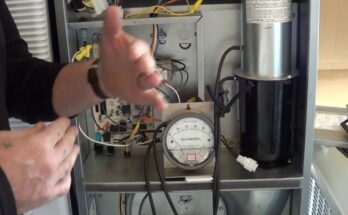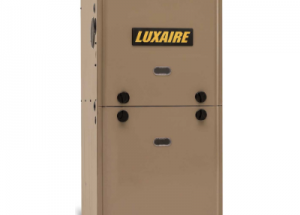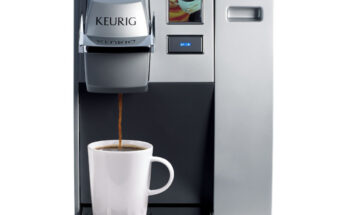The True Refrigerator Troubleshooting Manual provides step-by-step solutions for common refrigerator issues. It helps users maintain optimal performance.
True refrigerators are known for their reliability and efficiency in commercial settings. Despite their quality, occasional issues can arise, affecting performance. Common problems include temperature inconsistencies, unusual noises, and power failures. The True Refrigerator Troubleshooting Manual is an essential guide for addressing these issues quickly.
It offers clear, step-by-step instructions for diagnosing and resolving problems. Whether it’s a minor issue like a clogged drain or a major malfunction, the manual ensures users can keep their refrigerators running smoothly. This guide is a valuable resource for maintaining the longevity and efficiency of your True refrigerator, ensuring it operates at peak performance.
Common Issues
True refrigerators are durable and reliable. But, like any appliance, they can have problems. Understanding common issues can help you fix them quickly.
Temperature Fluctuations
Temperature changes can spoil food. There are several reasons for this.
- Dirty Condenser Coils: Clean the coils regularly.
- Faulty Thermostat: Check if the thermostat is working.
- Blocked Vents: Ensure vents are not blocked by food.
Use a thermometer to monitor the temperature. Adjust settings if needed. If problems persist, consult the manual.
Strange Noises
Unusual sounds can indicate a problem. Identify the type of noise to find the cause.
| Type of Noise | Possible Cause |
|---|---|
| Humming | Normal operation |
| Rattling | Loose parts |
| Banging | Compressor issues |
Regular maintenance can prevent many noise issues. If the noise continues, seek professional help.
Tools Needed
Having the right tools is key to troubleshooting your True refrigerator. This section will guide you through the essential tools needed. These tools make the repair process smoother and more efficient.
Basic Toolkit
A basic toolkit is essential for any repair task. Here are the must-have items:
- Screwdrivers: Both flathead and Phillips screwdrivers.
- Pliers: Needle-nose and slip-joint pliers.
- Wrenches: Adjustable wrench and socket set.
- Utility Knife: For cutting and stripping wires.
- Tape Measure: For measuring dimensions accurately.
Specialized Equipment
For more complex repairs, specialized equipment is needed. These tools are crucial for diagnosing specific issues:
| Tool | Description |
|---|---|
| Multimeter | Measures voltage, current, and resistance. |
| Thermometer | Checks the internal temperature of the fridge. |
| Vacuum Pump | Used for refrigerant recovery and evacuation. |
| Leak Detector | Identifies refrigerant leaks. |
| Capacitor Tester | Tests the functionality of capacitors. |
With these tools, you’re ready to tackle most refrigerator issues. Remember, safety first. Always unplug the refrigerator before starting any repairs.
Temperature Problems
True Refrigerators are known for their reliability. Yet, temperature issues can occur. This section will guide you through common temperature problems. Learn to troubleshoot effectively.
Cooling Too Much
Is your refrigerator cooling too much? Here are some steps to troubleshoot:
- Check the thermostat: Ensure it’s not set too low.
- Inspect door seals: Look for gaps or wear. Replace if needed.
- Examine airflow: Make sure vents are not blocked.
- Test the temperature sensor: Replace if it’s faulty.
Not Cooling Enough
If your True Refrigerator is not cooling enough, try these steps:
- Check the power supply: Make sure the unit is plugged in.
- Inspect the thermostat: Set it to the correct temperature.
- Clean the condenser coils: Dust and dirt can affect cooling.
- Examine door seals: Replace if they are damaged.
- Look at the fan: Ensure it is working properly.
| Problem | Solution |
|---|---|
| Cooling Too Much | Check thermostat, door seals, airflow, and sensor. |
| Not Cooling Enough | Check power, thermostat, coils, seals, and fan. |
Credit: www.truemfg.com
Electrical Concerns
Electrical problems can disrupt your True refrigerator’s performance. These issues often stem from power supply problems or faulty wiring. Addressing these problems quickly ensures your fridge works smoothly. This guide will help you troubleshoot common electrical issues.
Power Supply Issues
Power supply issues can stop your refrigerator from working. Start by checking if the fridge is plugged in properly. Ensure the power cord is secure and not damaged.
| Issue | Solution |
|---|---|
| No power to the fridge |
|
| Frequent power losses |
|
Faulty Wiring
Faulty wiring can cause serious issues, including short circuits. Start by visually inspecting the wiring for any signs of wear or damage.
- Turn off the power to the refrigerator before inspecting the wiring.
- Look for exposed wires or frayed insulation.
- If you find damaged wires, replace them immediately.
- Ensure all connections are tight and secure.
Signs of faulty wiring include:
- Sparking or sizzling sounds coming from the fridge.
- Flickering lights inside the refrigerator.
- Unusual odors, like burning plastic.
If you encounter any of these signs, it is best to consult a professional electrician. Keeping your refrigerator’s wiring in good condition ensures safe and efficient operation.
Maintenance Tips
Maintaining your True Refrigerator ensures it runs efficiently. Regular upkeep can prevent costly repairs. Follow these tips to keep your refrigerator in top shape.
Regular Cleaning
Regular cleaning extends the life of your refrigerator. Follow these steps:
- Wipe down exterior surfaces with a damp cloth.
- Clean interior shelves and drawers with mild soap.
- Remove and wash gaskets to ensure proper sealing.
Clean the condenser coils every six months. Use a vacuum or a brush to remove dust.
Component Inspections
Inspecting key components helps catch issues early. Check the following:
| Component | Inspection Tip |
|---|---|
| Thermostat | Ensure it maintains the correct temperature. |
| Door Seals | Check for cracks or wear. |
| Fan Motors | Listen for unusual noises. |
Replacing worn parts can prevent larger problems. Order new parts from authorized dealers.

Credit: www.reddit.com
Door Seal Issues
The door seal on your True Refrigerator keeps cold air inside. If the seal is broken, your fridge works harder. This leads to higher energy bills and spoiled food. Let’s learn how to fix it.
Checking Seals
First, check the door seal for any gaps or tears. Use these steps:
- Open the fridge door.
- Inspect the rubber seal around the door.
- Look for cracks, tears, or dirt.
- Close the door with a piece of paper in between.
If you can pull the paper out easily, the seal is not tight. You need to replace it.
Replacing Seals
Replacing the door seal is simple. Follow these steps:
- Buy a new seal that fits your True Refrigerator model.
- Soak the new seal in warm water to make it flexible.
- Remove the old seal by pulling it off gently.
- Clean the area where the old seal was.
- Press the new seal into place, starting at the top corner.
Make sure the new seal fits snugly around the door. Close the door and check for gaps again.
| Step | Description |
|---|---|
| 1 | Buy a new seal |
| 2 | Soak the new seal in warm water |
| 3 | Remove the old seal |
| 4 | Clean the area |
| 5 | Press the new seal into place |
With a new seal, your fridge will work better. You will save energy and keep your food fresh longer.
Compressor Troubles
The compressor is the heart of your True Refrigerator. It ensures your food stays cold and fresh. When it malfunctions, it can cause significant issues. Let’s explore some common compressor troubles.
Overheating
An overheating compressor can lead to bigger problems. It’s crucial to address this early. Here are some common causes and solutions:
| Causes | Solutions |
|---|---|
| Dirty condenser coils | Clean the coils regularly. |
| Poor ventilation | Ensure proper airflow around the fridge. |
| Faulty fan | Check and replace the fan if needed. |
Strange Sounds
If your compressor makes strange sounds, it may indicate an issue. Here are some steps to diagnose and fix it:
- Buzzing: This might be due to a dirty condenser. Clean it.
- Clicking: This could signal a failing start relay. Replace the relay.
- Humming: A constant hum is normal. But if it’s loud, check the compressor.
By addressing these issues promptly, you can extend the life of your True Refrigerator’s compressor. Regular maintenance is key to avoiding costly repairs.

Credit: www.scribd.com
Water Leaks
Water leaks in your True Refrigerator can cause a big mess. They can also lead to bigger issues if not fixed. Understanding the common causes can help you solve these problems quickly. Let’s explore some common reasons for water leaks.
Clogged Drain
A clogged drain is a frequent cause of water leaks. Over time, food particles and debris can block the drain. This blockage prevents water from draining properly.
To fix this, you need to clean the drain. Here is a simple way to do it:
- Unplug the refrigerator.
- Locate the drain hole, usually at the back.
- Use a pipe cleaner or a small brush to clear the blockage.
- Pour a mixture of warm water and vinegar to flush out remaining debris.
Faulty Water Line
A faulty water line can also cause leaks. The water line supplies water to the ice maker and dispenser. A crack or loose connection can lead to leaks.
Follow these steps to inspect and fix the water line:
- Turn off the water supply to the refrigerator.
- Check the water line for any visible cracks or damage.
- If you find any, replace the damaged section with a new line.
- Ensure all connections are tight and secure.
Regular maintenance can help prevent water leaks in your refrigerator. Always keep the drain clear and check the water line periodically.
When To Call A Professional
Knowing when to call a professional is crucial for True Refrigerator maintenance. Sometimes, DIY efforts are not enough. Understanding specific situations can save you time and money.
Complex Electrical Issues
Electrical issues can be dangerous. If your refrigerator has frequent power outages, you need an expert. Here’s a table to help identify when to call a professional:
| Issue | DIY or Professional |
|---|---|
| Frequent tripping of circuit breaker | Professional |
| Burnt smell near electrical components | Professional |
| Loose or exposed wires | Professional |
| Simple fuse replacement | DIY |
Frequent tripping of circuit breaker indicates a serious problem. Burnt smell near electrical components is hazardous. Loose or exposed wires need immediate attention. For simple issues like a fuse replacement, DIY efforts are okay.
Persistent Problems
If problems persist, it’s time to call a professional. Here are some persistent issues:
- Constant temperature fluctuations
- Unusual noises that don’t go away
- Water leakage that keeps returning
- Frost buildup in the freezer
Constant temperature fluctuations affect food safety. Unusual noises can signal mechanical failure. Water leakage can damage your kitchen floor. Frost buildup affects cooling efficiency. These issues require expert attention.
Frequently Asked Questions
Why Is My True Fridge Not Getting Cold?
Your True fridge might not be cold due to a faulty thermostat, dirty condenser coils, or blocked vents. Check these first.
What Does E1 Mean On A True Refrigerator?
E1 on a True refrigerator indicates a temperature sensor error. Check the sensor and connections for issues.
Why Does My True Refrigerator Compressor Keep Running?
Your True refrigerator compressor might keep running due to dirty condenser coils, faulty thermostat, or door seal issues. Regular maintenance and cleaning can help. If problems persist, contact a professional technician for a detailed inspection.
Why Is My True Fridge Leaking Water?
Your True fridge may leak due to a clogged defrost drain, faulty door seal, or a damaged water filter. Ensure proper maintenance to avoid this issue.
Conclusion
Troubleshooting your True refrigerator is simpler with this guide. Regular maintenance ensures longevity and efficiency. Keep an eye on common issues and address them promptly. These tips can save time and money. Stay proactive and enjoy a well-functioning refrigerator for years.
Happy troubleshooting!



